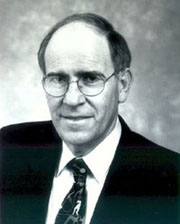Oct. 15, 2002--Vivian Klaff, director of the University of Delaware Jewish Studies Program, co-chaired the United Jewish Communities (UJC) committee that helped form the just-released survey showing the Jewish population in the U.S. is growing older and sparser.
 |
| Vivian Klaff, director of UD’s Jewish Studies Program |
The 2000-01 National Jewish Population Survey, compiled once every decade, found that the population of Jews in the U.S. today is 5.2 million, as compared to 5.5 million in 1990, and that the median age rose from 37 to 41 years.
“ The Jewish population is not being replaced. Women are not having a large number of children. We found a lower fertility rate and higher mortality rate amongst Jews,” Klaff said. He attributed the declining numbers to a change in demographics and socioeconomic factors.
“From 1970 to 1990, baby-boomers were growing up, getting jobs, getting married and raising families—all leading to rapid increases in demographics. By now, that trend is leveling off,” he said.
In addition, Jewish women are extending their educations, working longer and delaying starting a family, Klaff said. The survey shows that half of all Jewish women ages 30 to 34 haven’t had children, compared to 27 percent of the general population.
Most Jews in America were born here—85 percent—but the 15 percent that emigrated is higher than the11 percent of the general population that is foreign born.
The survey shows that 24 percent have graduate degrees, 55 percent have at least a bachelor’s degree, the median income is $50,000 (the national average is $42,000) and that 19 percent of all Jewish households have an income of less than $25,000 a year. The demographic makeup of the U.S. Jewish population is the first part of the survey. In November, the sociological aspects of being Jewish in America will be released with figures on how many Jews practice the religion, marry within the faith, define themselves as Jews and have other behaviors and attitudes.
“The good news is that while all Jews have the ability to be Jewish or not, 5 million are ‘doing Jewish,’” Klaff said. Despite demographic changes, intermarriage and young people experimenting with different religions, he said, there is still a solid core of Jews who consider themselves Jewish, and who are not withdrawing from the Jewish faith but maintaining the ethnic, cultural and ritual norms.
Article by Barbara Garrison
|

